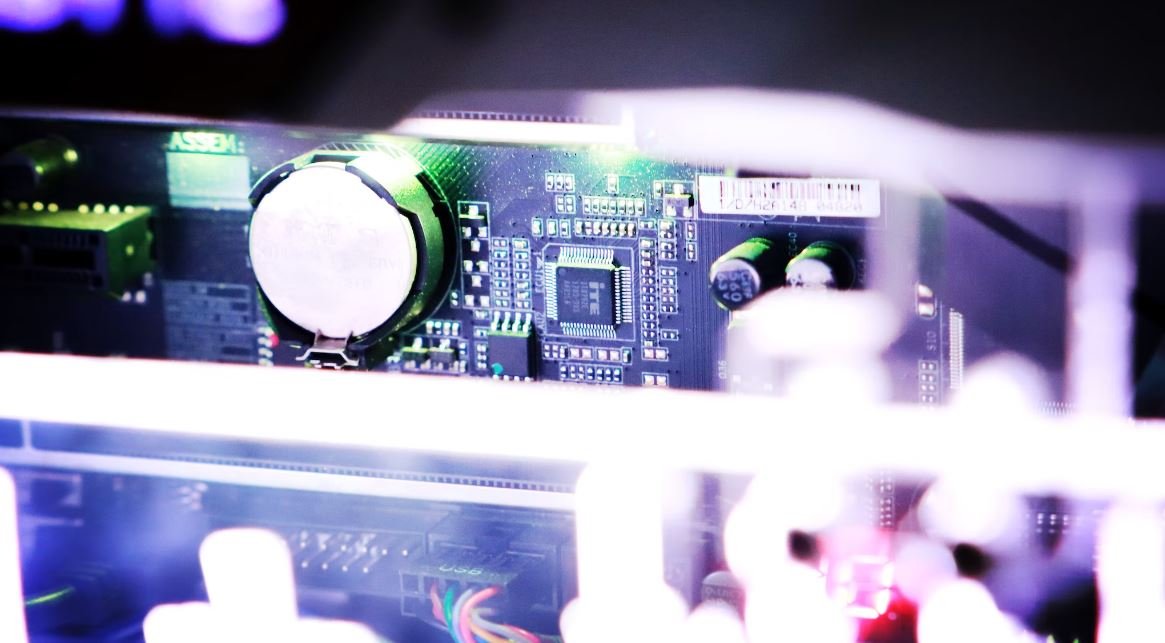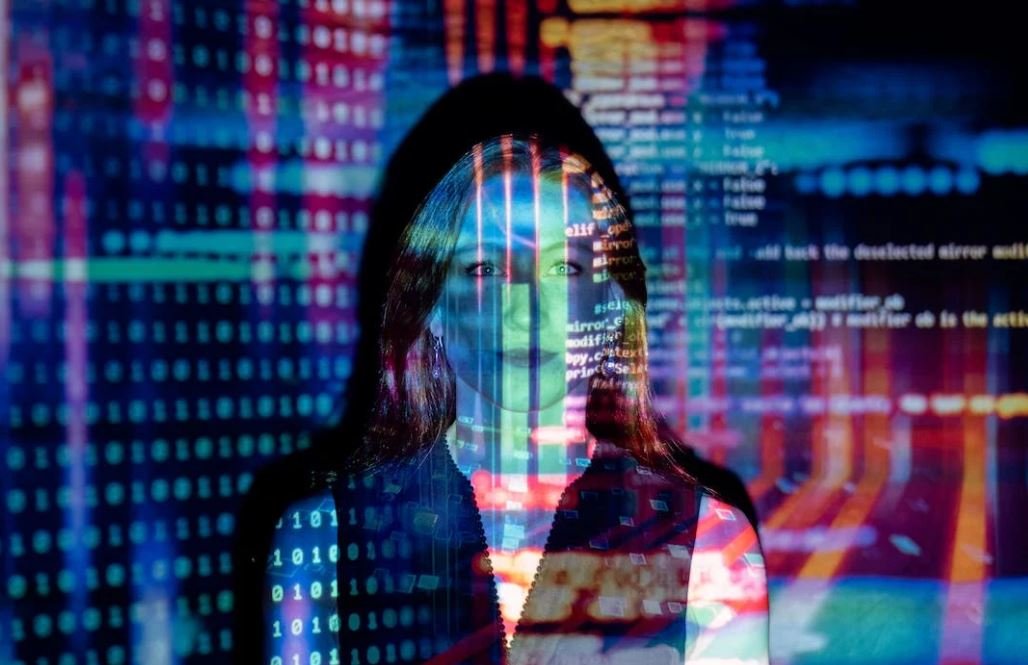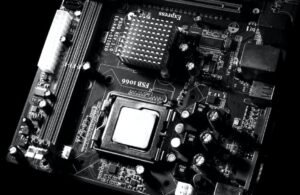How AI Image Works
Artificial Intelligence (AI) has revolutionized various industries, including image processing and interpretation. AI-powered image analysis systems have become more sophisticated, enabling faster and more accurate image recognition and analysis. This article explores the inner workings of AI image processing, highlighting its key components and processes.
Key Takeaways:
- AI image processing uses artificial intelligence algorithms to interpret and analyze images.
- Deep learning neural networks play a crucial role in training AI models for image recognition and analysis.
- Computer vision techniques enable AI systems to extract meaningful information from images.
Understanding AI Image Processing
AI image processing involves utilizing artificial intelligence algorithms to interpret and analyze images. These algorithms are trained using large datasets to recognize patterns and extract valuable information from visual data. **Through deep learning techniques**, AI systems can perform a range of image-related tasks, including object detection, image classification, image segmentation, and more.
**One interesting aspect of AI image processing is its ability to mimic human visual perception**, enabling machines to understand and make sense of the visual world around them.
Components of AI Image Processing
AI image processing consists of several key components that work together to provide accurate interpretation and analysis of images:
- **Preprocessing**: Before feeding images into AI models, preprocessing techniques are applied to enhance image quality and remove noise.
- **Feature Extraction**: This step involves identifying relevant features within an image that are crucial for recognition and analysis.
- **Deep Learning Neural Networks**: AI image processing heavily relies on deep learning neural networks, such as convolutional neural networks (CNNs), to extract high-level image features and make predictions.
- **Computer Vision**: Computer vision techniques enable AI systems to understand the content of images, detecting objects, recognizing shapes, and extracting meaningful information.
The Process of AI Image Analysis
The process of AI image analysis generally involves the following steps:
- **Data Acquisition**: Relevant image data is collected from various sources, such as cameras, databases, or the internet.
- **Data Preprocessing**: Images are prepared for analysis through preprocessing techniques, including resizing, normalization, and noise removal.
- **Feature Extraction**: AI algorithms identify key features within images, transforming raw visual data into meaningful representations for analysis.
- **Model Training**: Deep learning models are trained using labeled images, allowing them to learn patterns and associations between features and classes.
- **Model Evaluation**: Trained models are tested on a separate set of images to evaluate their performance and accuracy.
- **Inference**: Once trained, the AI model can then be deployed to analyze new images and generate predictions or insights.
Tables
| AI Image Processing Techniques | Applications |
|---|---|
| Object Detection | Autonomous vehicles, surveillance systems, facial recognition |
| Image Classification | Medical imaging, quality control, content filtering |
| Image Segmentation | Medical diagnosis, image editing, industrial automation |
| Advantages of AI Image Processing |
|---|
| Improved accuracy and precision |
| Efficient and automated analysis |
| Enhanced decision-making capabilities |
| Faster image processing |
| Challenges in AI Image Processing |
|---|
| Lack of interpretability in deep learning models |
| Insufficient training data for specialized domains |
| Computational resource requirements |
| Ethical considerations regarding privacy and bias |
Conclusion
AI image processing has greatly advanced the field of visual data analysis. By leveraging artificial intelligence algorithms and deep learning techniques, machines can now comprehend images, identify objects, and extract valuable information. These advancements have wide-ranging applications, from autonomous vehicles to medical imaging. As technology continues to evolve, we can expect further advancements in AI image processing, enabling machines to perceive and interpret the visual world with increasing accuracy and efficiency.

Common Misconceptions
AI Image Works as Magic
One common misconception about AI image technology is that it works like magic, effortlessly generating perfect results in an instant. However, the reality is that AI image works based on complex algorithms and machine learning techniques. It requires large amounts of training data and extensive computational power to achieve accurate results.
- AI image technology relies on mathematical algorithms and machine learning.
- It requires large-sized training datasets for accurate results.
- Computational power is necessary to process and analyze images effectively.
AI Image is 100% Accurate
Another misconception is that AI image technology is flawlessly accurate and can never make mistakes. While AI systems have made significant advancements in image analysis, they are not infallible. There can still be instances of misinterpretation or incorrect identification due to various factors.
- AI image technology has achieved impressive accuracy but is not perfect.
- Misinterpretation or incorrect identification can occur in certain scenarios.
- AI image systems have limitations in understanding context or subtle details.
AI Image Replaces Human Creativity
Some people believe that AI image technology has the potential to completely replace human creativity in artistic fields. While AI systems can generate impressive works of art, they lack the emotional depth and subjective interpretation that humans bring to the creative process.
- AI image technology can produce artwork but lacks human emotions and subjective interpretation.
- Human creativity involves personal experiences and emotions that AI cannot replicate.
- AI can be a tool to enhance human creativity but does not replace it entirely.
AI Image Works Perfectly in All Environments
There is a misconception that AI image technology performs flawlessly in all environments and conditions. However, certain factors like lighting, image quality, and noise can affect its accuracy. In challenging or complex scenarios, AI image systems may encounter difficulties.
- AI image technology’s performance can be impacted by lighting conditions and image quality.
- Noise or disruptions in the environment can affect accuracy.
- Challenging scenarios may present difficulties for AI image analysis.
AI Image Technology is Infallible
Lastly, some people have the misconception that AI image technology is infallible and cannot be deceived. However, adversarial attacks and carefully crafted manipulations can exploit vulnerabilities in AI image systems, resulting in misclassification or incorrect analysis.
- Adversarial attacks can exploit vulnerabilities in AI image systems.
- Manipulations can lead to misclassification or incorrect analysis.
- Acknowledging the limitations helps in better understanding AI image technology.

How AI Image Works
Artificial intelligence (AI) has revolutionized various industries, and one of its key applications is image recognition. With the ability to analyze and interpret visual data, AI algorithms can identify objects, patterns, and even emotions in images with remarkable accuracy. In this article, we delve into the fascinating world of AI image processing, highlighting ten intriguing aspects of this technology.
1. Detecting Faces
AI image recognition excels at detecting and recognizing human faces in photos. This capability has transformed the way we interact with technology, enabling features such as facial recognition on smartphones and enhancing security systems. By analyzing facial landmarks, dimensions, and expressions, AI algorithms can identify individuals and even infer their emotions.
2. Identifying Landmarks
Through AI image processing, computers can identify famous landmarks like the Eiffel Tower or the Great Wall of China. This technology aids in image categorization, organizing vast photo collections and enabling efficient search functionality. By accurately identifying landmarks, AI can provide users with information about historical sites, tourist attractions, and points of interest.
3. Classifying Objects
AI algorithms can classify objects in images, accurately labeling them as animals, vehicles, furniture, or numerous other categories. This capability finds applications in e-commerce, where AI can automatically categorize products or recommend similar items based on visual similarities. With object classification, AI enhances search accuracy and streamlines online shopping experiences.
4. Analyzing Text within Images
AI image recognition extends beyond visual analysis, as it can also read and analyze text within images. This capacity enables technologies such as optical character recognition (OCR), which converts scanned documents or images into editable text. AI-powered OCR enhances data entry accuracy, automates document processing, and aids visually impaired individuals through text-to-speech functionality.
5. Recognizing Handwritten Digits
AI image processing algorithms can recognize and classify handwritten digits, even when written in various styles and orientations. This capability has diverse applications, including automated form processing, digitized signature verification, and aiding in educational settings where handwritten assignments need grading. By deciphering handwritten characters, AI enhances efficiency and accuracy in numerous domains.
6. Emotion Recognition
Using AI image recognition, computers can analyze facial expressions and recognize emotions such as happiness, sadness, anger, or surprise. This technology holds promise in diverse fields, from market research to mental health. Emotion recognition can provide insights into consumer reactions to advertising campaigns, support emotion-aware virtual assistants, and aid therapists in assessing patients’ emotional states.
7. Image-Based Recommendation Systems
AI-driven recommendation systems leverage image recognition to offer personalized suggestions based on users’ visual preferences. For example, e-commerce platforms can recommend fashion items by analyzing users’ fashion taste and suggesting similar products. Similarly, streaming services can recommend movies or shows based on images users have engaged with, enhancing the overall user experience.
8. Visual Search
Visual search technology utilizes AI image recognition to enable users to search for information using images rather than text. By analyzing the visual characteristics of uploaded images, search engines can provide users with similar or related visual content. This improves search accuracy, especially in cases where users struggle to describe what they are looking for in words.
9. Deepfakes Detection
The rise of deepfake technology, which involves creating manipulated but realistic-looking media, has led to concerns regarding misinformation and fake news. AI image recognition can play a vital role in detecting deepfakes by analyzing inconsistencies, artifacts, and other visual cues that indicate digital manipulation. By identifying deepfakes, AI contributes to maintaining trust and authenticity in media.
10. Medical Image Analysis
In the medical field, AI image recognition is transforming diagnostics and enhancing patient care. By analyzing medical images such as X-rays, MRI scans, or histopathology slides, AI algorithms can aid in the detection, classification, and quantification of diseases. This technology assists in early detection, reducing manual interpretation errors, and improving medical decision-making.
AI image recognition proves to be a powerful tool across various domains, from enhancing user experiences to improving medical outcomes. With ongoing advancements and research, this technology will likely continue to revolutionize the way we process, understand, and interact with visual data.
How AI Image Works – Frequently Asked Questions
Question: How does AI image recognition work?
AI image recognition works by training artificial intelligence models to analyze and understand images. These models use deep learning algorithms to recognize patterns and features within the images, allowing them to classify and identify objects, people, scenes, and more.
Question: What is deep learning?
Deep learning is a subset of machine learning that focuses on artificial neural networks with multiple layers. These neural networks enable the algorithm to learn and extract more complex representations and hierarchical abstractions from the data, hence improving the accuracy and efficiency of the image recognition process.
Question: How are AI models trained for image recognition?
AI models are trained for image recognition by utilizing large datasets of labeled images. These datasets are fed into the neural network, and the model iteratively adjusts its internal parameters to minimize the difference between its predicted output and the correct labels. This process is known as training, and it enables the model to learn how to recognize various objects and features within the images.
Question: What are the applications of AI image recognition?
AI image recognition has a wide range of applications, including but not limited to facial recognition, object detection, image search, autonomous vehicles, medical imaging, surveillance systems, and quality control in manufacturing processes.
Question: How accurate is AI image recognition?
The accuracy of AI image recognition depends on various factors, such as the size and quality of the training dataset, the complexity of the objects being recognized, and the specific model and algorithms being used. State-of-the-art AI image recognition models can achieve high accuracy rates, sometimes even surpassing human-level performance in certain tasks.
Question: Can AI image recognition be fooled or manipulated?
Yes, AI image recognition systems can be fooled or manipulated in certain scenarios. Adversarial examples, which are carefully designed images with small modifications, can deceive AI models into misclassifying objects. However, researchers are actively working on developing defenses against such attacks to enhance the robustness and reliability of AI image recognition.
Question: How do AI models handle different image variations?
AI models are designed to be robust to variations in images, such as changes in scale, rotation, lighting conditions, and viewpoint. Through the training process, the models learn to extract invariant features that are useful for recognition across different variations. Additionally, data augmentation techniques can be employed to artificially generate diverse variations of the training images, further improving the model’s ability to handle different image conditions.
Question: How does AI image recognition impact privacy and security?
AI image recognition systems raise concerns about privacy and security, particularly in applications like facial recognition and surveillance. The potential misuse of such technologies can lead to unauthorized tracking, profiling, and invasion of privacy. It is essential for regulations and safeguards to be in place to ensure responsible and ethical use of AI image recognition technologies.
Question: Are there limitations to AI image recognition?
Yes, AI image recognition still has certain limitations. For example, the models may struggle to recognize objects or scenes that differ significantly from what they were trained on. Additionally, the models may have difficulty discerning certain fine-grained details or ambiguous cases. Ongoing research and advancements aim to address these limitations and improve the accuracy and generalization capabilities of AI image recognition.
Question: Can AI image recognition be used for creative purposes?
AI image recognition can indeed be used for creative purposes. Artists and designers can leverage AI models to generate unique and innovative visual content, such as art pieces, photo filters, or even assist in the creative process. By training the models on a diverse range of existing artworks and photographs, they can generate new and inspiring creations.




